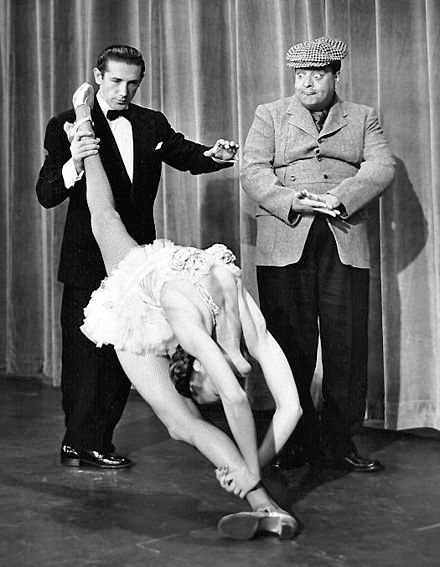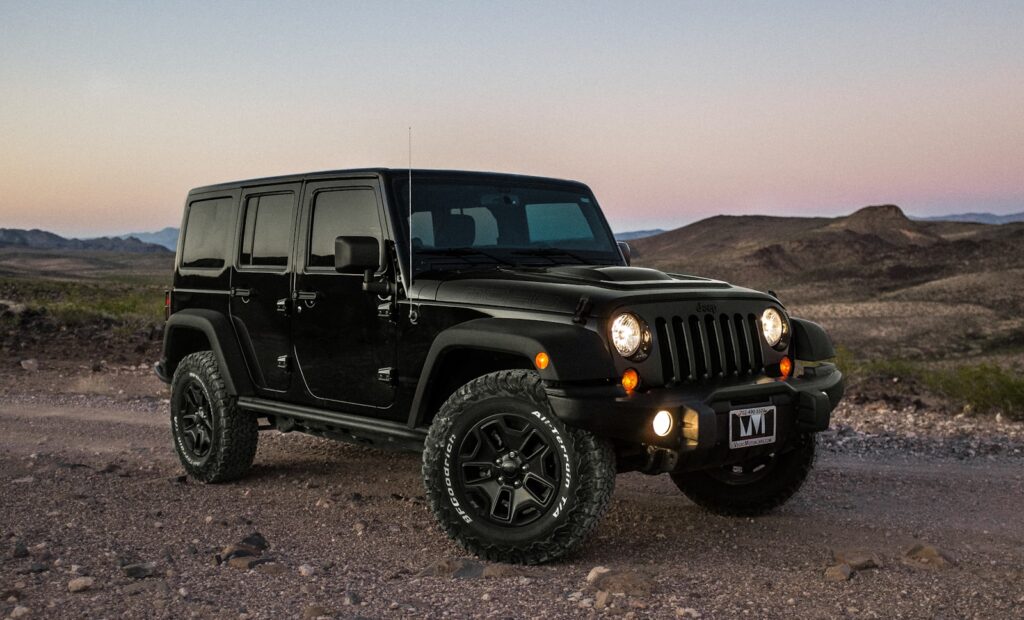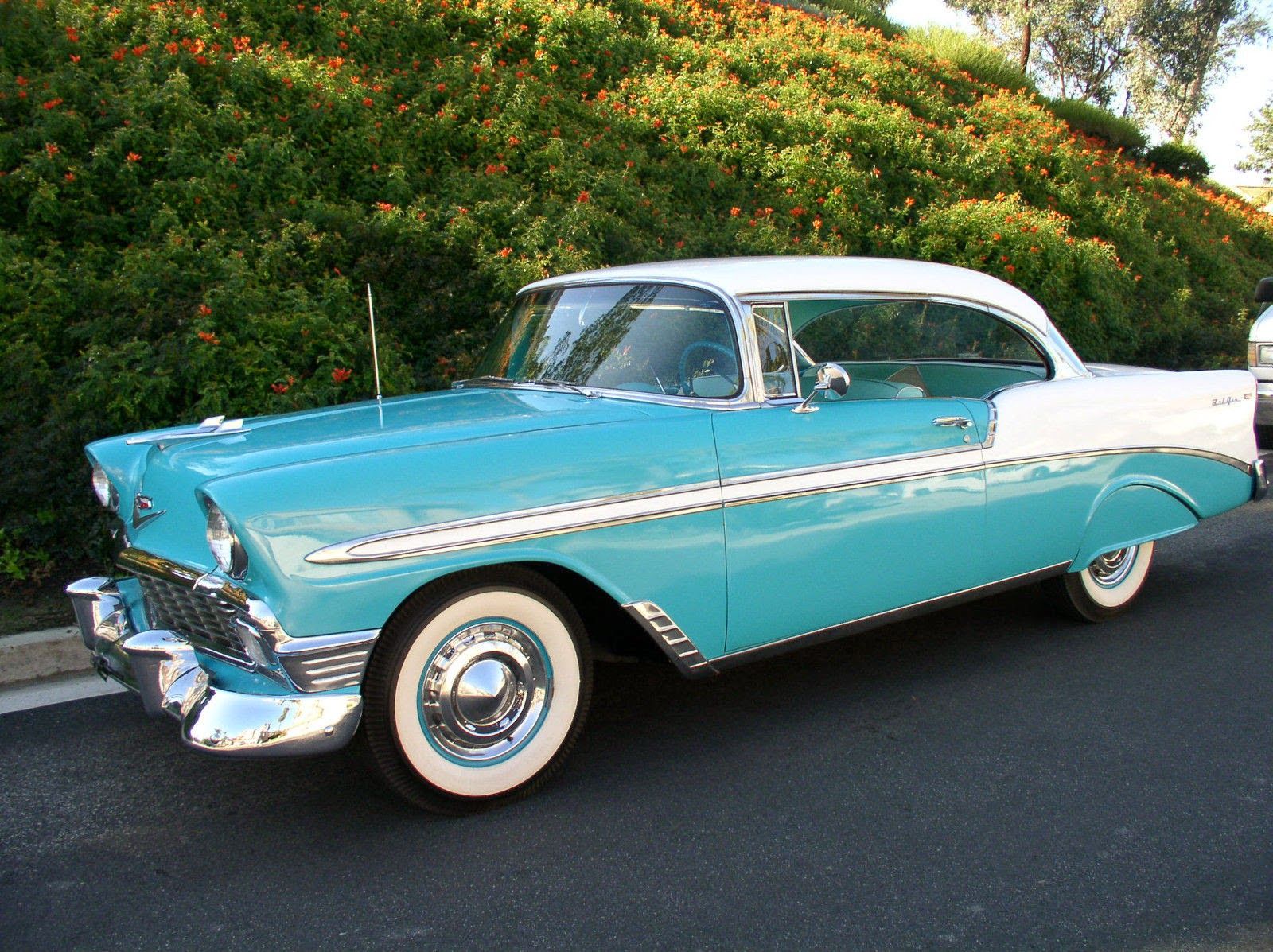
Classic cars hold a special place in the hearts of enthusiasts and the general public alike. Their allure often stems from their captivating aesthetics – the gleaming chrome bumpers, elegantly curved fenders, and meticulously crafted retro interiors are undeniably pure eye candy. This visual appeal frequently sparks a desire to own, or at least experience, a piece of automotive history.
However, for those who have ventured beyond admiring these vintage rides from afar and actually taken them for a spin, a harsh truth often emerges. Beauty, in the automotive world, doesn’t always translate into quality behind the wheel. A significant number of these vintage machines are, unfortunately, all style and very little substance, delivering a driving experience that can be profoundly disappointing.
From steering systems that feel vague and disconnected to suspensions that are sloppy and unresponsive, and brakes that inspire questionable confidence, these vehicles serve as potent reminders. They highlight that not everything from the past deserves an uncritical comeback – especially when it comes to the practicalities of driving on modern roads. This article will dissect 15 such classics, revealing why their stunning exteriors often mask a truly terrible driving experience.
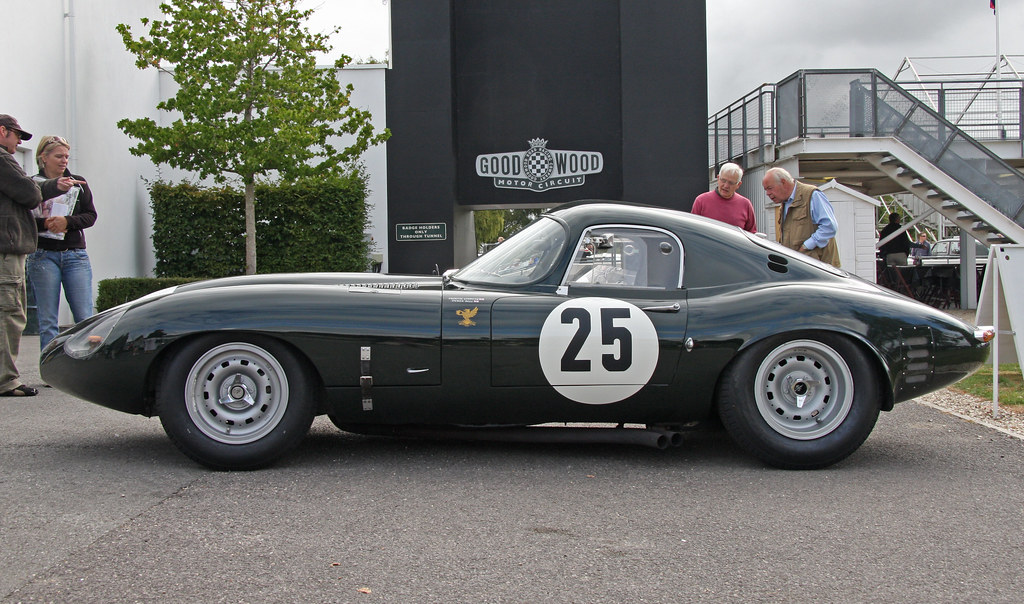
1. **Jaguar E-Type (1961–1975)**There is simply no denying the breathtaking curb appeal of the Jaguar E-Type. Its long bonnet, sleek lines, and iconic silhouette have cemented its place as one of the most beautiful cars ever made, a true masterpiece of design that looks fast even when standing still. This aesthetic prowess naturally sets high expectations for its performance and driving dynamics.
Yet, for many who get behind the wheel, the actual driving experience can be a considerable letdown. The steering is often described as heavy, requiring significant effort, and the gear changes can feel clunky and imprecise. Furthermore, the suspension, while perhaps adequate for the roads of its era, simply doesn’t handle the nuances and demands of modern roadways all that well.
Despite its celebrated sports car image, the E-Type often fails to deliver a truly connected driving feel. Drivers might find themselves feeling somewhat detached from the road, rather than intimately engaged with the machine. It is, by many accounts, a classic far better suited to being admired in a showroom than actively pushed through a series of demanding, curvy backroads.
It truly looks fast standing still, and for many, that might unfortunately be the best and most enjoyable way to appreciate this visually stunning but dynamically compromised vehicle. The disparity between its looks and its road manners is a frequent topic among those who have owned or driven one extensively.
Car Model Information: 1971 Jaguar E-Type Restomod
Sp: uk
Name: Jaguar E-Type
Caption: 1961 E-Type Series 1 3.8-Litre, the first production model of this open two-seater
Aka: Jaguar XK-E , Jaguar V-12
Manufacturer: Jaguar Cars
Production: 1961–1974
Class: Sports car
Predecessor: Jaguar XK150
Related: Jaguar D-Type,Jaguar XJ13
Successor: Jaguar XJS
Layout: FMR layout
Assembly: Coventry,England
Designer: Malcolm Sayer
Categories: 1970s cars, 2+2 coupés, All articles with dead external links, All articles with specifically marked weasel-worded phrases, All articles with unsourced statements
Summary: The Jaguar E-Type, or the Jaguar XK-E for the North American market, is a British front mid-engined sports car that was manufactured by Jaguar Cars Ltd from 1961 to 1974. Its sleek appearance, advanced technologies, high performance, and competitive pricing established it as an icon. The E-Type’s claimed 150 miles per hour (240 km/h) top speed, sub-7-second 0 to 60 mph (97 km/h) acceleration, largely unitary body construction, front and rear independent suspension with disc brakes, mounted inboard at the rear, and rack-and-pinion steering spurred industry-wide changes.
The E-Type was based on Jaguar’s D-Type racing car, which had won the 24 Hours of Le Mans for three consecutive years beginning in 1955.
The E-Type employed what was, for the early 1960s, a novel design principle, with a front subframe carrying the engine, front suspension and front bodywork bolted directly to the body tub. No ladder frame chassis, as was common at the time, was needed and as such the first cars weighed only 1,315 kg (2,899 lb).
It is rumored that, on its debut on 15 March 1961, Enzo Ferrari called it “the most beautiful car ever made”, but this statement is not fully confirmed. In 2004, Sports Car International magazine placed the E-Type at number one on their list of Top Sports Cars of the 1960s. In March 2008, the Jaguar E-Type ranked first in The Daily Telegraph’s online list of the world’s “100 most beautiful cars” of all time.
Get more information about: Jaguar E-Type
Buying a high-performing used car >>>
Brand: Jaguar Model: E-Type
Price: $64,900 Mileage: 2,455 mi.

2. **Volkswagen Beetle (1938–2003)**The Volkswagen Beetle possesses an undeniable, almost universal charm that spans generations. Its distinctive, iconic shape and cheerful demeanor have made it one of the most recognizable and beloved cars in history, radiating a friendly and approachable persona. It’s a car with personality for days, embodying a sense of nostalgia and simplicity.
However, a smooth and engaging driving experience is conspicuously absent from its package. The engine, particularly in older models, is often characterized by a distinctive, rather uninspiring sound, likened by many to a sewing machine. The steering feels vague, offering little in the way of direct feedback or precision, making it a challenge to place accurately on the road.
Acceleration is another area where the Beetle struggles, taking what feels like an eternity to get up to speed. Behind the wheel, the overall experience is often described as noisy, slow, and stiff, particularly on longer journeys. This combination means that extended drives feel considerably longer, and the handling characteristics do not inspire a great deal of confidence.
Is it fun to look at? Absolutely, its unique design never fails to bring a smile. Is it fun to drive? Not so much, unfortunately. The charming exterior hides a mechanical reality that is far more utilitarian and far less refined than one might hope, especially in contemporary driving conditions.
Car Model Information: 1971 Volkswagen Super Beetle Base
Sp: uk
Name: Volkswagen Type 1,”Beetle”
Caption: 1965–1966 Volkswagen Käfer
Manufacturer: Volkswagen
Alt: A front-three quarters view of a pale-yellow Volkswagen Käfer. It features 165/80R15 tires, which shod 15×4. 5″ silver, circular wheels. The Käfer features a beetle-like body, and its window is open. The picture is taken with much greenery in the background, and the photo was edited to give it a more warmer tone.
Aka: List of names for the Volkswagen Type 1
Assembly: #Markets and assembly
Designer: Ferdinand Porsche
Class: Small family car
BodyStyle: Sedan (automobile),convertible
Production: 1938–2003,21,529,464 produced
Successor: Volkswagen Golf Mk1,Volkswagen Gol#First generation (Typ30, 1980),Volkswagen New Beetle
Layout: Rear-engine, rear-wheel-drive layout
Engine: Petrol,Volkswagen air-cooled engine,1192 cc H4,1285 cc H4,1493 cc H4,1584 cc H4
Transmission: manual transmission,Saxomat,Autostick
Wheelbase: convert
Length: convert
Width: convert
Height: 1500 mm
Abbr: on
Weight: convert
Categories: 1940s cars, 1950s cars, 1960s cars, 1970s cars, 1980s cars
Summary: The Volkswagen Beetle, officially the Volkswagen Type 1, is a small family car produced by the German company Volkswagen from 1938 to 2003. Considered a global cultural icon, the Beetle is widely regarded as one of the most influential cars of the 20th century. Its production period of 65 years is the longest of any single generation of automobile, and its total production of over 21.5 million is the most of any car of a single platform and the second-most of any nameplate produced in the 20th century.
The Beetle was conceived in the early 1930s. The leader of Nazi Germany, Adolf Hitler, decided there was a need for a people’s car—an inexpensive, simple, mass-produced car—to serve Germany’s new road network, the Reichsautobahn. The German engineer Ferdinand Porsche and his design team began developing and designing the car in the early 1930s, but the fundamental design concept can be attributed to Béla Barényi in 1925, predating Porsche’s claims by almost ten years. The result was the Volkswagen Type 1 and the introduction of the Volkswagen brand. Volkswagen initially slated production for the late 1930s, but the outbreak of war in 1939 meant that production was delayed until the war had ended. The car was originally called the Volkswagen Type 1 and marketed simply as the Volkswagen. It was not until 1968 that it was officially named the “Beetle”.
Volkswagen implemented designations for the Beetle in the 1960s, including 1200, 1300, 1500, 1600, 1302, and 1303. Volkswagen introduced a series of large luxury models throughout the 1960s and 1970s—comprising the Type 3, Type 4 and K70—to supplement the Beetle, but none of these models achieved the level of success that it did. Rapidly changing consumer preferences toward front-wheel drive compact hatchbacks in Europe prompted Volkswagen’s gradual shift away from rear-wheel drive, starting with the Golf in 1974. In the late 1970s and ’80s, Japanese automakers dominated some markets around the world, which contributed to the Beetle’s declining popularity.
Over its lifespan, the Beetle’s design remained consistent, yet Volkswagen implemented over 78,000 incremental updates. These modifications were often subtle, involving minor alterations to its exterior, interior, colours, and lighting. Some more noteworthy changes included the introduction of new engines, models and systems, such as improved technology or comfort. The Beetle maintains a substantial cultural influence and is regarded as one of the most iconic vehicles in automotive history; its success largely influenced the way automobiles are designed and marketed, whilst propelling Volkswagen’s introduction of a Golf-based series of vehicles.
Get more information about: Volkswagen Beetle
Buying a high-performing used car >>>
Brand: Volkswagen Model: Beetle
Price: $18,999 Mileage: 96,000 mi.
Read more about: Hot Rod Dreams on a Budget: 12 Classic Cars That Are Surprisingly Cheaper to Restore Than Purchase
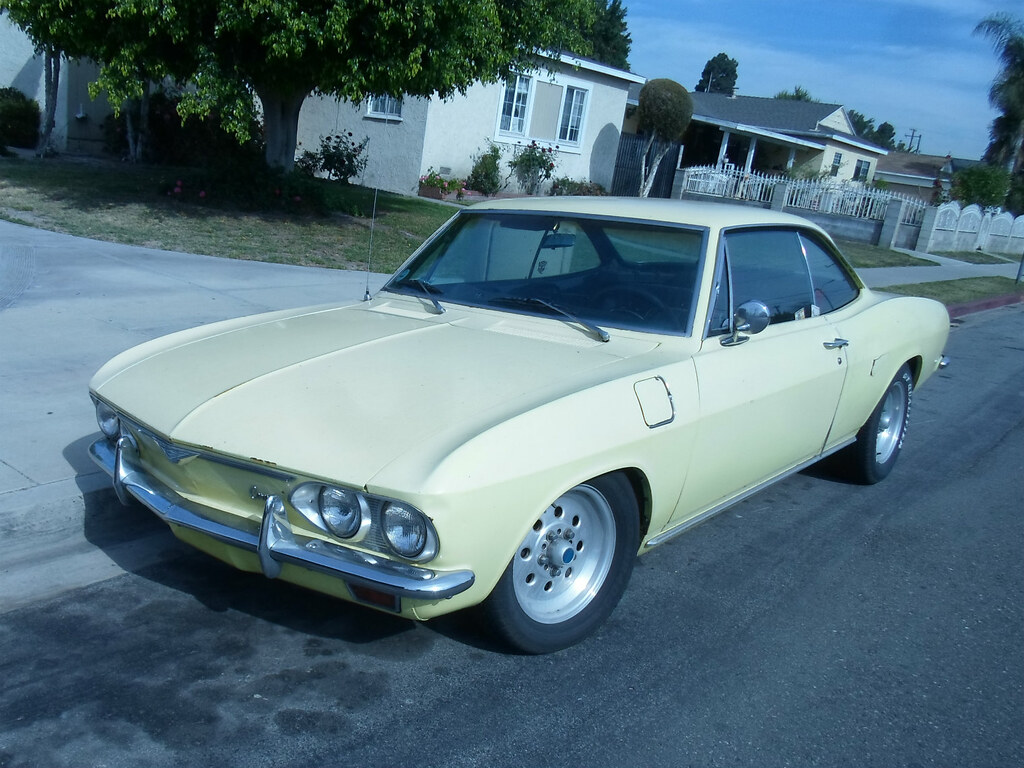
3. **Chevrolet Corvair (1960–1969)**General Motors took a bold and unconventional approach with the Chevrolet Corvair, attempting to introduce something genuinely different to the American market. This pioneering spirit led to a unique configuration: a rear-mounted, air-cooled engine paired with a swing-axle suspension system. This engineering choice set it apart from its contemporaries, giving it a distinct character.
However, this innovative design ultimately came at a cost, as GM paid dearly for its experimentation. The combination of the rear-mounted engine and the swing-axle suspension made the Corvair notoriously unpredictable in corners. This was especially true if the road conditions were anything less than perfect, leading to handling characteristics that could be unsettling for drivers.
Despite having significant potential as a compact, innovative vehicle, the Corvair developed a sketchy reputation due to its sloppy handling and poor weight balance. These issues were not just minor quirks but fundamental aspects of its dynamic performance that garnered considerable public and critical scrutiny. Even today, many people admire the Corvair for its distinctiveness and willingness to break the mold.
Yet, once you actually get behind the wheel, the reasons for its controversial past quickly become apparent. The driving experience often elucidates why it stirred up so much discussion and concern, underscoring the challenge of balancing innovative design with reliable and predictable road behavior.
Car Model Information: 1964 Chevrolet Corvair Monza
Caption: 1964 Chevrolet Corvair Monza
Name: Chevrolet Corvair
Manufacturer: Chevrolet
Production: 1960–1969
Platform: GM Z platform
Chassis: Unibody
ModelYears: 1960–1969
Assembly: United States,Kansas City, Missouri,Oakland, California,Van Nuys,St. Louis,Flint, Michigan,Belgium,Canada,Mexico,South Africa,Switzerland,Venezuela
Class: Compact car
Successor: Chevrolet Vega
Layout: Rear-engine, rear-wheel-drive layout
Categories: All Wikipedia articles written in American English, All articles lacking in-text citations, All articles needing additional references, All articles with dead external links, All articles with specifically marked weasel-worded phrases
Summary: The Chevrolet Corvair is a rear-engined, air-cooled compact car manufactured and marketed by Chevrolet over two generations between 1960 and 1969. The Corvair was a response to the increasing popularity of small, fuel-efficient automobiles, particularly the imported Volkswagen Beetle and the success of American-built compacts like the Rambler American and Studebaker Lark.
The first generation (1960–1964) was offered as a four-door sedan, two-door coupe, convertible, and four-door station wagon. A two- and four-door hardtop and a convertible were available second generation (1965–1969) variants. The Corvair platform was also offered as a subseries known as the Corvair 95 (1961–1965), which consisted of a passenger van, commercial van, and pickup truck variant. Total production was approximately 1.8 million vehicles from 1960 until 1969.
The name “Corvair” was first applied in 1954 to a Corvette-based concept with a hardtop fastback-styled roof, part of the Motorama traveling exhibition. When applied to the production models, the “air” part referenced the engine’s cooling system.
A prominent aspect of the Corvair’s legacy derives from controversy surrounding its handling, articulated aggressively by Ralph Nader’s Unsafe at Any Speed and tempered by a 1972 Texas A&M University safety commission report for the National Highway Traffic Safety Administration (NHTSA) which found that the 1960–1963 Corvair possessed no greater potential for loss of control in extreme situations than contemporary compacts.
To better counter popular inexpensive subcompact competitors, notably the Beetle and Japanese imports such as the Datsun 510, GM replaced the Corvair with the more conventional Chevrolet Vega in 1970.
Get more information about: Chevrolet Corvair
Buying a high-performing used car >>>
Brand: Chevrolet Model: Corvair
Price: $29,988 Mileage: 74,787 mi.
Read more about: From ‘Ugly’ Ducklings to Coveted Classics: 14 American Cars That Are Now Collector’s Gold

4. **Ford Thunderbird (1955–1966)**The Ford Thunderbird, particularly from its early generations, embodied the epitome of a personal luxury coupe. Its elegant lines, distinctive grille, and overall sophisticated presence exuded an aura of class and aspirational lifestyle. It was designed to look fantastic and offer a smooth, comfortable ride, particularly in a straight line, appealing to those seeking an image of effortless cruising.
However, the reality behind the wheel often diverged significantly from this luxurious image. The driving experience of the Thunderbird has frequently been likened to piloting a floating sofa. This analogy stems from its remarkably soft suspension, which prioritizes a plush ride over any semblance of dynamic control or feedback.
The steering is characterized by its slowness, requiring considerable input to effect a change in direction, and offering little in the way of road feel. Furthermore, drivers quickly become acutely aware of the vehicle’s substantial weight, particularly when attempting to navigate a turn. The car’s heft becomes a dominant factor in its handling, contributing to a sense of detachment.
While it certainly looks fantastic and excels at providing a smooth journey on straight stretches of road, the Thunderbird swiftly reveals its limitations when faced with more demanding driving scenarios. Ultimately, this car was always more about the image it projected and the luxury it promised than the actual driving experience it delivered, making it a triumph of style over dynamic substance.
Car Model Information: 1966 Ford Thunderbird Base
Name: Ford Thunderbird
Caption: 1957 Thunderbird
Manufacturer: Ford Motor Company
Production: unbulleted list
ModelYears: unbulleted list
Class: unbulleted list
Layout: Front-engine, rear-wheel drive layout
Categories: 1960s cars, 1970s cars, 1980s cars, 1990s cars, 2000s cars
Summary: The Ford Thunderbird is a personal luxury car manufactured and marketed by Ford Motor Company for model years 1955 to 2005, with a hiatus from 1998 to 2001.
Ultimately gaining a broadly used colloquial nickname, the T-Bird, the model was introduced as a two-seat convertible, subsequently offered variously in a host of body styles including as a four-seat hardtop coupe, four-seat convertible, five-seat convertible and hardtop, four-door pillared hardtop sedan, six-passenger hardtop coupe, and five-passenger pillared coupe, before returning in its final generation, again as a two-seat convertible.
At its inception, Ford targeted the two-seat Thunderbird as an upscale model. The 1958 model year design introduced a rear seat and arguably marked the expansion of a market segment that came to be known as personal luxury cars, positioned to emphasize comfort and convenience over handling and high-speed performance.
Get more information about: Ford Thunderbird
Buying a high-performing used car >>>
Brand: Ford Model: Thunderbird
Price: $44,999 Mileage: 71,017 mi.

5. **Morris Minor (1948–1971)**For its time, the Morris Minor was celebrated as a practical and economical vehicle, playing a significant role in providing affordable transportation. Its humble, endearing design, often associated with post-war Britain, has earned it a classic status and a certain vintage charm. It was built for utility and everyday use, fulfilling a vital need for a reliable compact car.
However, attempting to drive a Morris Minor today can feel less like a nostalgic trip and more like a genuine chore. The car is notoriously slow to accelerate, struggling to keep pace with modern traffic, and feels clumsy and unwieldy when navigating corners. At anything approaching highway speeds, the Morris Minor feels completely out of its depth, demanding significant driver effort to maintain control.
Operating the steering is often described as a workout, requiring considerable physical exertion from the driver due to its lack of power assistance and inherent heaviness. The suspension system, similarly, offers very little in the way of support or refinement, contributing to a generally uncomfortable ride. Despite its undeniable vintage charm and historical significance, these qualities simply do not compensate for how uncomfortable and underpowered it feels on contemporary roads.
The Morris Minor serves as a stark reminder that while a car might have been perfectly adequate or even innovative in its era, technological advancements mean that its driving dynamics can become a significant drawback decades later. Its visual appeal endures, but its practical usability as a modern driving machine is severely compromised.

6. **Ford Model T (1908–1927)**No discussion of historically significant automobiles is complete without the Ford Model T. It undeniably changed the world, revolutionizing manufacturing and making car ownership accessible to the masses, thereby fundamentally reshaping society and personal mobility. Its impact on the automotive industry and beyond is simply immeasurable, a true icon of innovation.
Yet, despite its monumental historical importance, the Model T is categorically not fun to drive by any modern standard. Operating one requires what amounts to a crash course in a unique and often bewildering system of controls. Drivers must contend with foot controls for shifting, a manual hand throttle, and brakes that are practically non-existent or, at best, rudimentary and highly unpredictable.
The entire driving experience is characterized as rough and awkward, demanding constant attention and physical effort from the driver. To put it in perspective, the raw and unrefined nature of driving a Model T makes even the most basic, entry-level modern sedan feel like a high-end luxury car by comparison. The chasm in driving comfort and ease is immense.
So, is it historically important? Absolutely, without question. Is it something you would want to daily drive? Not unless you are genuinely time-traveling back to its era. The Model T is a fascinating piece of engineering and cultural history, best appreciated in a museum or as a static display rather than as a regular mode of transport on today’s roads.
Car Model Information: 2023 Honda Civic Sport
Caption: 1925 Ford Model T Touring Car
Manufacturer: Ford Motor Company
Production: October 1908 – May 1927
Assembly: collapsible list
Designer: Childe Harold Wills
Class: Economy car
BodyStyle: collapsible list
Layout: FMR layout
Engine: straight-4
Transmission: planetary gear
Wheelbase: 100.0 in
Abbr: on (1912 roadster)
Length: 134 in
Width: 1676 mm
Height: 1860 mm
Weight: convert
Predecessor: Ford Model N
Successor: Ford Model A (1927–1931)
Categories: 1900s cars, 1908 establishments in the United States, 1910s cars, 1920s cars, All articles needing additional references
Summary: The Ford Model T is an automobile that was produced by the Ford Motor Company from October 1, 1908, to May 26, 1927. It is generally regarded as the first mass-affordable automobile, which made car travel available to middle-class Americans. The relatively low price was partly the result of Ford’s efficient fabrication, including assembly line production instead of individual handcrafting. The savings from mass production allowed the price to decline from $780 in 1910 (equivalent to $26,322 in 2024) to $290 in 1924 ($5,321 in 2024 dollars). It was mainly designed by three engineers, Joseph A. Galamb (the main engineer), Eugene Farkas, and Childe Harold Wills. The Model T was colloquially known as the “Tin Lizzie”.
The Ford Model T was named the most influential car of the 20th century in the 1999 Car of the Century competition, ahead of the BMC Mini, Citroën DS, and Volkswagen Beetle. Ford’s Model T was successful not only because it provided inexpensive transportation on a massive scale, but also because the car signified innovation for the rising middle class and became a powerful symbol of the United States’ age of modernization. With over 15 million sold, it was the most sold car in history before being surpassed by the Volkswagen Beetle in 1972.
Get more information about: Ford Model T
Buying a high-performing used car >>>
Brand: Ford Model: Model T
Price: $27,589 Mileage: 27,524 mi.
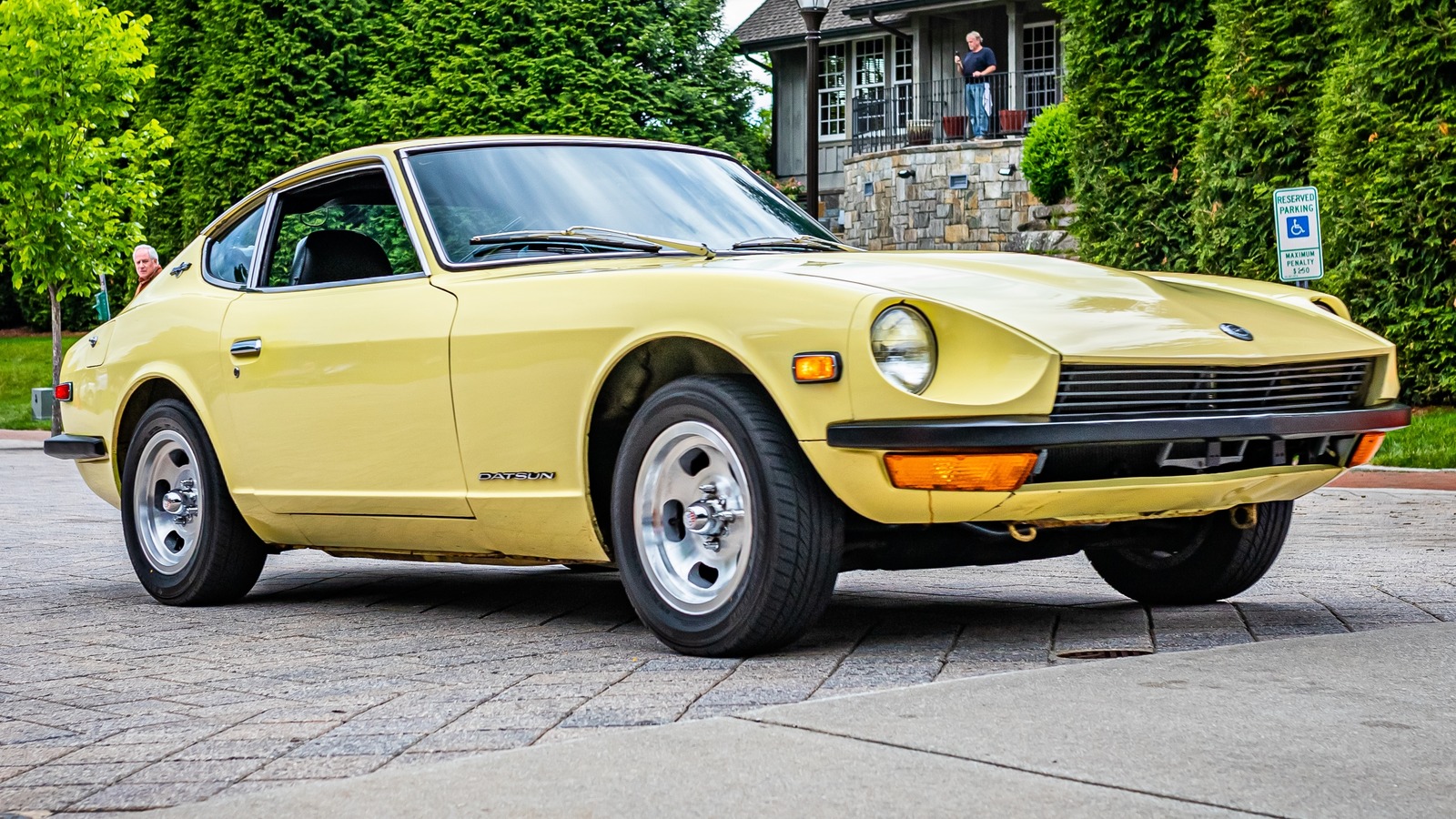
7. **Datsun 240Z (1969–1978)**The Datsun 240Z burst onto the scene looking very much like a budget-friendly European sports car, offering sleek styling and performance aspirations at an accessible price point. Its attractive appearance and promise of sporty dynamics led it to sell like crazy, quickly becoming a beloved choice for those seeking a stylish and seemingly capable coupe without breaking the bank. The hype surrounding it was considerable.
However, for many enthusiasts, the actual driving experience often failed to live up to the lofty expectations set by its striking looks. The suspension, while providing a degree of comfort, often felt floaty, lacking the tautness and precision one would expect from a true sports car. This translated into a less-than-responsive feel when pushed through corners, diminishing the sense of connection to the road.
The steering, too, was frequently criticized for lacking sufficient feel, making it difficult for drivers to accurately gauge what the front wheels were doing. While the power output was decent for its day, offering respectable acceleration in its time, it now feels somewhat flat and uninspiring, especially compared to contemporary performance standards. It certainly handles better than some of the more egregious examples on this list.
Nonetheless, the gap between what drivers expected from its sporty appearance and the reality of its on-road behavior was often significant. For all its good looks and historical significance as a sports car icon, the 240Z tends to feel more ‘old’ than ‘gold’ once you truly begin to push its limits, revealing its age and design compromises.
Car Model Information: 1972 Datsun 240Z
Name: Nissan Fairlady Z (Datsun 240Z, 260Z, and 280Z)
Aka: unbulleted list
Manufacturer: Nissan
Production: 1969–1978
Class: Sports car
Layout: Front-engine, rear-wheel-drive layout
Assembly: Hiratsuka, Kanagawa
BodyStyle: unbulleted list
Designer: Yoshihiko Matsuo
Predecessor: Datsun Sports
Successor: Nissan Fairlady Z (S130)
Caption: 1970–1973 Nissan Fairlady Z
Categories: 1970s cars, All Wikipedia articles written in American English, All articles with unsourced statements, Articles with short description, Articles with unsourced statements from February 2021
Summary: The Nissan S30, sold in Japan as the Nissan Fairlady Z but badged as the Datsun 240Z, 260Z, and 280Z for export, are 2-seat sports cars and 2+2 GT cars produced by Nissan from 1969 until 1978. The S30 was conceived of by Yutaka Katayama, the President of Nissan Motor Corporation U.S.A., and designed by a team led by Yoshihiko Matsuo, the head of Nissan’s Sports Car Styling Studio. It is the first car in Nissan’s Z series of sports cars.
The S30 had four-wheel independent suspension and a powerful straight-six engine with an overhead camshaft, features identified with far more expensive premium European sports cars and coupés such as the Jaguar E-Type and BMW 2800 CS, but absent from similarly priced sports cars such as the Alfa Romeo Spider, MGB and Opel GT, which had smaller four-cylinder engines and rear live axles. The S30’s styling, engineering, relatively low price, and impressive performance resonated with the public, received a positive response from both buyers and the motoring press, and immediately generated long waiting lists.
As a halo car, the S30 broadened the acceptance of Japanese carmakers beyond their image as producers of practical and reliable but prosaic and unfashionable economy cars. Datsun’s growing dealer network—compared to limited production imported sports cars manufactured by Jaguar, BMW, Porsche, Alfa Romeo, and Fiat—ensured both easy purchase and ready maintenance.
The S30 was initially sold alongside the smaller four-cylinder Datsun Sports, which was dropped from production in 1970. The S30 240Z is unrelated to the later 240SX, sold as the Silvia in Japan.
Get more information about: Nissan Fairlady Z (S30)
Buying a high-performing used car >>>
Brand: Datsun Model: 240Z
Price: $33,999 Mileage: 122,000 mi.

8. **Chevrolet Camaro (1967–1969)**The first-generation Chevrolet Camaro embodied the quintessential muscle car, with its powerful stance and promise of exhilarating straight-line speed. Its classic lines and aggressive profile remain a symbol of American automotive prowess. However, beneath that iconic exterior, its dynamic capabilities often left much to be desired, creating a significant disconnect between its visual appeal and driving reality.
Drivers frequently encountered a steering system that felt vague and disconnected, offering little precision or feedback from the road. The braking performance was often barely adequate, inspiring questionable confidence, while the ride quality could be notably rough around the edges. This lack of refinement meant the car demanded constant attention and effort from the driver, particularly when not in a straight line.
Ultimately, while the first-gen Camaro delivers on the raw, visceral experience of a true muscle car in a drag race, it falls short when it comes to sophisticated driving dynamics. It’s a vehicle best appreciated for its sound and stance, rather than as a competent performer on demanding roads or for comfortable daily use.
Car Model Information: 1968 Chevrolet Camaro
Name: Chevrolet Camaro
Manufacturer: Chevrolet
Production: 1966–2002,2009–2023
ModelYears: 1967–2002,2010–2024
Class: Pony car
BodyStyle: coupe,convertible
Platform: GM F platform,GM Zeta platform,GM Alpha platform
Layout: Front-engine, rear-wheel-drive layout
Categories: 1970s cars, 1980s cars, 1990s cars, 2+2 coupés, 2000s cars
Summary: The Chevrolet Camaro is a mid-size American automobile manufactured by Chevrolet, classified as a pony car. It first went on sale on September 29, 1966, for the 1967 model year and was designed to compete with the Ford Mustang. The Camaro shared its platform and major components with the Firebird, produced by General Motors’ Pontiac division that was also introduced for the 1967 model year.
Four distinct generations of the Camaro were developed before production ended in 2002. The nameplate was revived on a concept car that evolved into the fifth-generation Camaro; production started on March 16, 2009.
Production of the sixth generation of the Camaro ended in December 2023, for the 2024 model year.
Get more information about: Chevrolet Camaro
Buying a high-performing used car >>>
Brand: Chevrolet Model: Camaro
Price: $79,980 Mileage: 1,713 mi.
Read more about: 11 Iconic Classics: Your Ultimate Guide to Restoring Affordable Dreams Instead of Buying Them

9. **Aston Martin DB5 (1963–1965)**The Aston Martin DB5, forever linked with James Bond, is a global icon of elegance and sophistication. Its sleek, sculpted lines and luxurious presence continue to captivate, cementing its status as one of automotive history’s most beautiful creations. This timeless beauty naturally sets high expectations for its performance and driving experience.
However, the cinematic portrayal of effortless precision diverged significantly from the DB5’s real-world driving characteristics. The steering often felt disconnected, failing to provide the intimate feedback expected from a high-performance grand tourer. Brakes were frequently described as “wooden,” lacking progressive feel, while overall handling simply did not match its sleek reputation, making it more about making a statement than agile performance.
Today, despite its unquestionable beauty and historical value, modern sports cars easily surpass the DB5 in dynamic capability. It remains a magnificent piece of automotive art, best suited for admiration in a museum or private collection, rather than for spirited driving on winding roads. It is a car purchased for its rich history and status, not for its driving prowess.
Car Model Information: 2023 Honda Civic Sport
Name: Aston Martin DB5
Manufacturer: Aston Martin
Production: 1963–1965 (1,059 units),2020 (25 units)
Assembly: Newport Pagnell,England
Designer: Carrozzeria Touring Superleggera
Class: Grand tourer
BodyStyle: coupé
Layout: Front-engine, rear-wheel-drive layout
Engine: DOHC,Straight-6,3995 cc
Order: flip
Abbr: on
Powerout: convert
Transmission: ZF Friedrichshafen
Length: 4570 mm
Width: 1680 mm
Wheelbase: 98.0 in
Predecessor: Aston Martin DB4
Successor: Aston Martin DB6
Doors: 2
Weight: 3311 lb
Sp: uk
Categories: Articles with short description, Aston Martin vehicles, CS1: unfit URL, Cars discontinued in 1965, Cars introduced in 1963
Summary: The Aston Martin DB5 is a British grand tourer (GT) produced by Aston Martin and designed by Italian coachbuilder Carrozzeria Touring Superleggera. Originally produced from 1963 to 1965, the DB5 was an evolution of the final series of DB4. The “DB” designation is from the initials of David Brown who built up the company from 1947 onwards.
The DB5 is best-known for its role in the James Bond films. It was first driven by the fictional spy in the film Goldfinger (1964). In 2013, the car featured on a “British Auto Legends” postage stamp issued by the Royal Mail.
Get more information about: Aston Martin DB5
Buying a high-performing used car >>>
Brand: Aston Martin Model: DB5
Price: $27,589 Mileage: 27,524 mi.

10. **Plymouth Barracuda (1964–1974)**The Plymouth Barracuda, particularly its muscle car iterations, exuded an aggressive attitude and undeniable visual power, promising high-octane excitement. Its design spoke volumes about American performance, attracting buyers seeking raw horsepower and a commanding presence. Yet, this brawny exterior often masked significant compromises in dynamic performance.
Despite its powerful looks, handling was never a strong suit for the Barracuda. The steering felt notably vague, offering minimal connection to the road, while the rear end was notoriously twitchy under power. This combination made cornering an unpredictable affair, often requiring significant driver correction and diminishing confidence when pushed.
While mashing the throttle on a straight line provided a thrilling rush, that enjoyment quickly faded once curves entered the equation. The Barracuda was designed for straight-line dominance, embracing torque and tail-wagging antics more suitable for burnouts than for nuanced control or spirited driving through winding routes. It prioritizes brute force over precision.
Car Model Information: 1971 Plymouth Barracuda
Caption: 1970 Hardtop Coupe
Name: Plymouth Barracuda
Manufacturer: Plymouth (automobile)
Production: 1964–1974
Assembly: Fenton, Missouri,Hamtramck, Michigan,Maywood, California,Windsor, Ontario
Layout: Front-engine, rear-wheel drive layout
Class: Pony car
Categories: 1970s cars, All articles with dead external links, All articles with unsourced statements, Articles with dead external links from February 2018, Articles with dead external links from January 2022
Summary: The Plymouth Barracuda is a two-door pony car that was manufactured by Chrysler Corporation from 1964 through 1974 model years.
The first-generation Barracuda was based on the Chrysler A-body and was offered from 1964 until 1966. A two-door hardtop (no B-pillar) fastback design, it shared a great majority of parts and bodywork with the Plymouth Valiant, except for the distinctive wraparound rear glass.
The second-generation Barracuda, though still Valiant-based, was heavily redesigned. Built from 1967 through 1969, it was available as a two-door in fastback, notchback, and convertible versions.
The third generation, offered from 1970 until 1974, was based on the Chrysler E-body, exclusive to it, and the slightly larger Dodge Challenger. A completely new design, the two-door Barracuda was available in hardtop and convertible body styles.
Get more information about: Plymouth Barracuda
Buying a high-performing used car >>>
Brand: Plymouth Model: Barracuda
Price: $54,999 Mileage: 12,468 mi.
Read more about: Hot Rod Dreams on a Budget: 12 Classic Cars That Are Surprisingly Cheaper to Restore Than Purchase
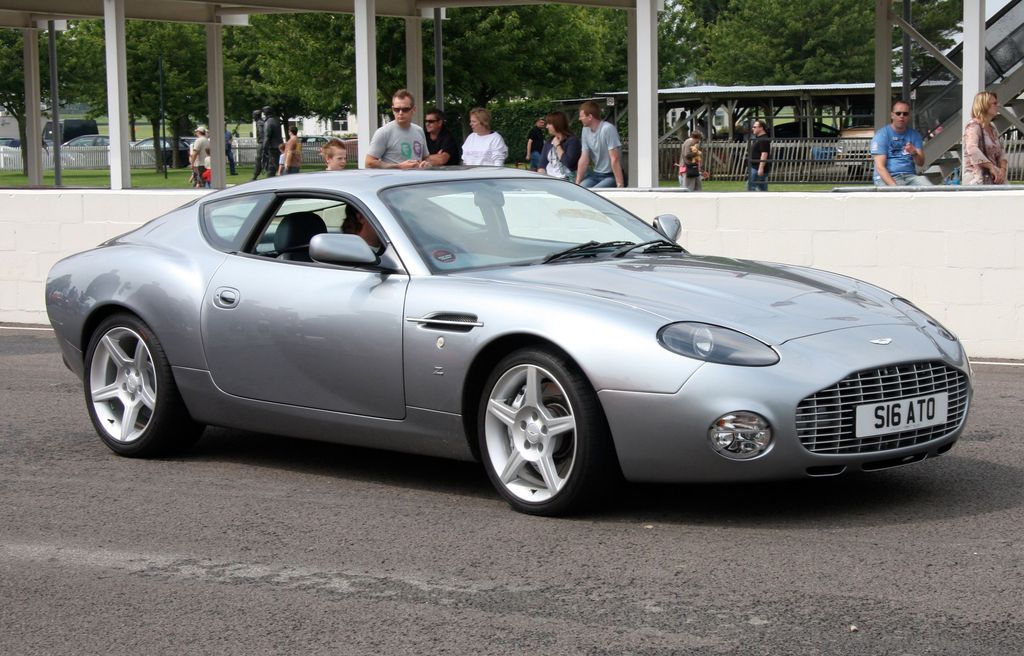
11. **Aston Martin DB7**The Aston Martin DB7 is widely regarded as one of the most beautiful vehicles produced by the prestigious British marque. Its sensuous curves, elegant proportions, and timeless design established it as a true grand tourer, easily turning heads. This visual appeal alone contributed significantly to its premium market position.
The Aston Martin DB7 is widely regarded as one of the most beautiful vehicles produced by the prestigious British marque. Its sensuous curves, elegant proportions, and timeless design established it as a true grand tourer, easily turning heads. This visual appeal alone contributed significantly to its premium market position.
However, the DB7’s driving dynamics were fundamentally constrained by its controversial basis on the aging Jaguar XJS architecture, a cost-saving measure under Ford ownership. This foundation resulted in “wooly” steering, an unresponsive chassis, and copious amounts of body roll, preventing it from truly excelling as a performance machine or delivering an engaging driving feel.
Car Model Information: 2023 Honda Civic Sport
Name: Aston Martin DB7
Caption: Aston Martin DB7 V12 Vantage
Manufacturer: Aston Martin
ModelYears: 1994–1999 (United States & Canada for I6 Model),1999–2003 (United States & Canada for Vantage Models)
Production: September 1994 – December 2004,(7,000 produced)
Assembly: Bloxham,Oxfordshire
Predecessor: Aston Martin DB6
Successor: Aston Martin DB9
Class: Grand tourer
BodyStyle: coupé
Layout: Mid-engine design
Platform: Jaguar XJS
Related: Jaguar XK (X100)
Engine: Jaguar AJ6 engine#3.2 (1990–1994),supercharged,Straight-six engine
Transmission: GM 4L80-E transmission,Magna PT#Longitudinal orientation,ZF 5HP30 transmission,Borg-Warner T-56 transmission
Wheelbase: 2591 mm
Abbr: on (Volante)
Length: 4646 mm
Width: 1830 mm
Height: 1268 mm
Weight: {{convert,1825,kg,lb,abbr=on
Designer: Ian Callum,Keith Helfet
Sp: uk
Categories: 2000s cars, Articles with short description, Aston Martin vehicles, Cars discontinued in 2004, Cars introduced in 1993
Summary: The Aston Martin DB7 is a car that was produced by British luxury car manufacturer Aston Martin from September 1994 to December 2004. It was designed by Ian Callum and Keith Helfet as a grand tourer in coupé and convertible bodystyles. The prototype was complete by November 1992 and debuted at the Geneva Motor Show in March 1993. The six-cylinder DB7 (based on the Jaguar AJ6 engine) was positioned as an “entry-level” model below the hand-built V8 Virage introduced a few years earlier. At the time, the DB7 was the most-produced Aston Martin automobile in the company’s history, with more than 7,000 built before it was replaced by the DB9 in 2004.
Get more information about: Aston Martin DB7
Buying a high-performing used car >>>
Brand: Aston Martin Model: DB7
Price: $27,589 Mileage: 27,524 mi.
Read more about: Million-Dollar Motors: An In-Depth Look at the World’s Most Coveted Classic Cars for Enthusiasts

12. **Disco Volante by Touring Superleggera**The Disco Volante, a masterpiece from Carrozzeria Touring Superleggera, is arguably one of the sexiest coach-built cars available today. It astonishingly blends evocative 1950s aesthetics with modern design, built upon the foundation of the already striking Alfa Romeo 8C Competizione. Its visual artistry pushes automotive boundaries.
However, this breathtaking exterior masks a driving experience that struggles to match its magnificent looks. This dynamic shortcoming stems from its donor car, the Alfa Romeo 8C, which many road testers found to be a pretty terrible performance car. Criticisms included significant body-roll, poor steering feel, and unpredictable handling when pushed to the limit.
The disparity between its sculptural form and on-road behavior is striking. While it appears poised for thrilling performance, the actual engagement behind the wheel often reveals a machine more comfortable with gentle cruising than aggressive cornering. For fortunate owners, the Disco Volante serves as a glorious piece of mobile sculpture, best admired as a static icon of design.
Car Model Information: 2023 Honda Civic Sport
Name: Carrozzeria Touring Superleggera S.r.l.
Logo: Superleggera 2024 logo.jpg
Type: Automobile manufacturer
Foundation: Milan,kingdom of Italy
Founder: Felice Bianchi Anderloni, Gaetano Ponzoni
LocationCity: Milan
LocationCountry: Italy
AreaServed: Worldwide
KeyPeople: Markus Tellenbach, CEO ,Matteo Gentile, Head of Design
Industry: Automotive
Products: coachbuilt limited-production cars
Services: automotive design, coachbuilding, engineering, homologation, non-automotive industrial design, restoration of classic cars, custom coachbuilding, restoration services, limited-edition sports cars
Subsid: Bruino (TO)
Rivalta (TO)
Homepage: https://www.touringsuperleggera.eu/en/|touringsuperleggera.eu
Categories: 1926 establishments in Italy, 1966 disestablishments in Italy, All articles needing additional references, Articles needing additional references from May 2025, Articles with short description
Summary: Carrozzeria Touring Superleggera is an Italian automobile coachbuilder. Originally established in Milan in 1925, Carrozzeria Touring became well known for both the beauty of its designs and patented superleggera construction methods. The business folded in 1966. In 2006 its brands and trademarks were purchased and a new firm was established nearby to provide automotive design, engineering, coachbuilding, homologation services, non-automotive industrial design, and restoration of historic vehicles.
Carrozzeria Touring was established on 25 March 1926 by Felice Bianchi Anderloni (1882–1948) and Gaetano Ponzoni. After achieving success through the middle of the 20th century, the business began to decline as automobile manufacturers replaced body-on-frame automobile construction with unitary design and increasingly took coachbuilding in-house.
After the original firm ceased production in 1966, Carlo Felice Bianchi Anderloni and Carrozzeria Marazzi preserved the “Touring Superleggera” trademark and used it on several occasions to support the company’s heritage. The trademark was acquired by the current owner, a family business, which began conducting its activities in 2006 under the name Carrozzeria Touring Superleggera S.r.l.; the new firm is headquartered nearby Milan, its hometown.
Get more information about: Carrozzeria Touring Superleggera
Buying a high-performing used car >>>
Brand: Touring Superleggera Model: Disco Volante
Price: $27,589 Mileage: 27,524 mi.
Read more about: The 13 Most Beautiful Sports Cars Ever Designed: A Masterclass in Automotive Art and Engineering

13. **Maserati 3200 GT**The Maserati 3200 GT debuted with a truly stunning Giorgetto Giugiaro design, particularly the iconic LED boomerang rear lights of its early models. Its svelte yet muscular waistline gave the car an unmistakable and elegant presence, solidifying its status as a desirable Italian grand tourer purely based on aesthetics.
Yet, this undeniably beautiful package was ultimately undermined by poor driving dynamics. The steering rack was often overly sensitive, making the car feel nervous rather than precise, while the dim-witted automatic gearbox struggled with responsive shifts. Coupled with a floaty suspension, the 3200 GT was genuinely difficult to hustle down a challenging back road with confidence.
While its potent twin-turbocharged 3.2-litre V8 engine (370bhp) was a redeeming feature, it could not overcome the broader dynamic deficiencies. The Maserati 3200 GT thus exemplifies a car where stunning design triumphs over practical driving pleasure, remaining a visual masterpiece but falling short as an engaging driver’s car.
Car Model Information: 2023 Honda Civic Sport
Name: Maserati 3200 GT
Manufacturer: Maserati
Production: 1998–2002,4,795 produced
Assembly: Modena
Designer: Giorgetto Giugiaro,Enrico Fumia
Class: Grand tourer
BodyStyle: 2+2 (car body style),coupé
Layout: Front-engine, rear-wheel-drive layout
Engine: Maserati_V8_engine,twin-turbocharged,V8 engine
Transmission: Getrag,Drivetrain Systems International#M72LE
Wheelbase: 2660 mm
Abbr: on (Assetto Corsa)
Length: 4510 mm
Width: 1822 mm
Height: 1305 mm
Weight: convert
Predecessor: Maserati Shamal,Maserati Ghibli#Ghibli (AM336)
Successor: Maserati Coupé
Sp: uk
Categories: 2000s cars, Articles with short description, CS1 Italian-language sources (it), Cars introduced in 1998, Commons category link is on Wikidata
Summary: The Maserati 3200 GT (Tipo 338) is a four-seater grand tourer produced by Italian automobile manufacturer Maserati from 1998 to 2002, replacing the Shamal as the flagship grand tourer of the marque. The luxury coupé was designed by Italdesign, whose founder and head Giorgetto Giugiaro previously designed, among others, the Ghibli, Bora and Merak. Interior design was commissioned to Enrico Fumia and completed by 1995. 4,795 cars were produced before it was replaced by the Maserati Coupé.
Get more information about: Maserati 3200 GT
Buying a high-performing used car >>>
Brand: Maserati Model: 3200 GT
Price: $27,589 Mileage: 27,524 mi.
Read more about: Illuminating Icons: A Deep Dive into 15 Classic Cars with the Most Jaw-Dropping Tail Light Designs
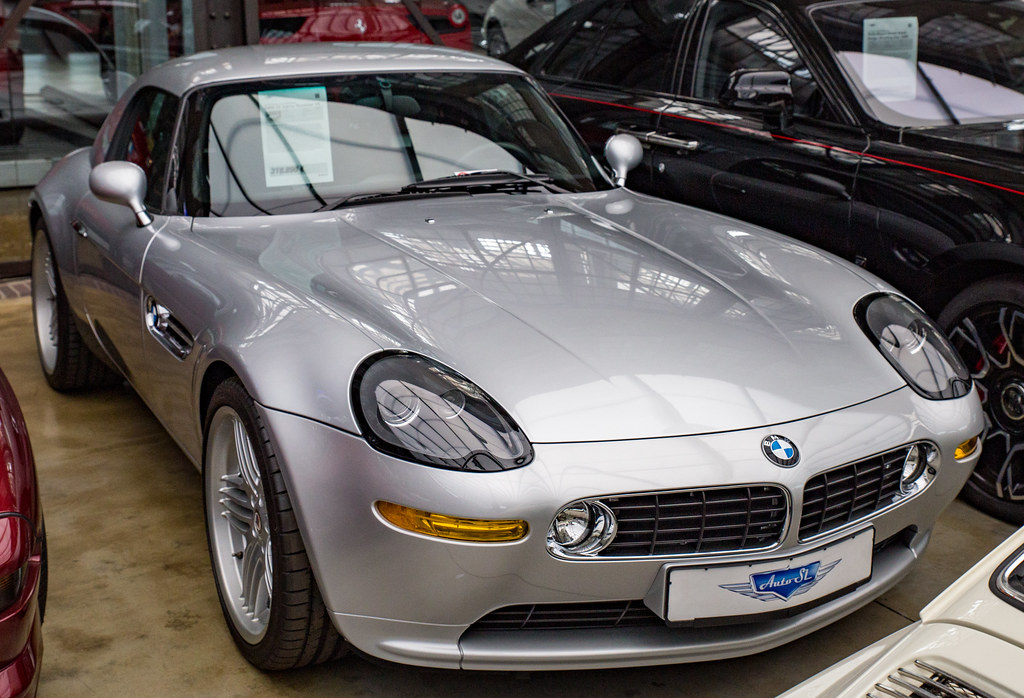
14. **BMW Z8**The BMW Z8 captivated with its exquisite, retro-inspired looks, drawing heavily from the legendary BMW 507. This undeniably beautiful machine was a modern interpretation of a classic roadster, promising timeless elegance and contemporary performance, instantly becoming a visual icon and collector’s item.
However, despite its breathtaking aesthetics, the Z8 never quite hit the mark dynamically. Drivers frequently lamented a distinct lack of steering feel, robbing them of true road connection, while chronic understeer and a notably soft suspension further compromised its prowess. This gave the Z8 an identity crisis, struggling to define itself as a focused sports car, cruiser, or grand tourer.
Though powered by a robust E39 M5-derived 4.9-litre V8, providing ample straight-line poke, this engine couldn’t redeem the “dodgy package” of its chassis and handling. The Z8 is consequently a magnificent achievement in design, but its driving dynamics reveal it to be far more of a static showpiece to be admired on a plinth than an engaging machine for exhilarating drives.
Car Model Information: 2003 BMW Z8 Base
Name: BMW Z8 (E52)
Production: 1998–2003,5,703 produced
Assembly: Munich
Class: Sports car
BodyStyle: Roadster (automobile)
Layout: rear-wheel drive
Engine: BMW S62
Transmission: manual transmission
Wheelbase: 98.6 in
Abbr: cite web
Length: 173.2 in
Width: 72 in
Height: 51.9 in
Weight: 3494 lb
ModelYears: 1999–2003
Designer: Henrik Fisker
Categories: All articles with dead external links, Articles with dead external links from September 2023, Articles with permanently dead external links, Articles with short description, BMW vehicles
Summary: The BMW Z8 is a roadster produced by German automotive manufacturer BMW from 1998 to 2003. The Z8 was developed under the codename “E52” between 1993 and 1999, through the efforts of a design team led by Chris Bangle from 1993 to 1995. The exterior was designed by Henrik Fisker and the interior by Scott Lempert.
The Z8 originally was designed as a styling exercise intended to evoke and celebrate the 1956–1959 BMW 507. Prototypes were spotted testing between 1996 and 1999. A concept was later developed to preview the Z8, called the Z07 and was showcased in October 1997 at the Tokyo Motor Show.
Get more information about: BMW Z8
Buying a high-performing used car >>>
Brand: BMW Model: Z8
Price: $235,990 Mileage: 24,839 mi.
Read more about: Illuminating Icons: A Deep Dive into 15 Classic Cars with the Most Jaw-Dropping Tail Light Designs
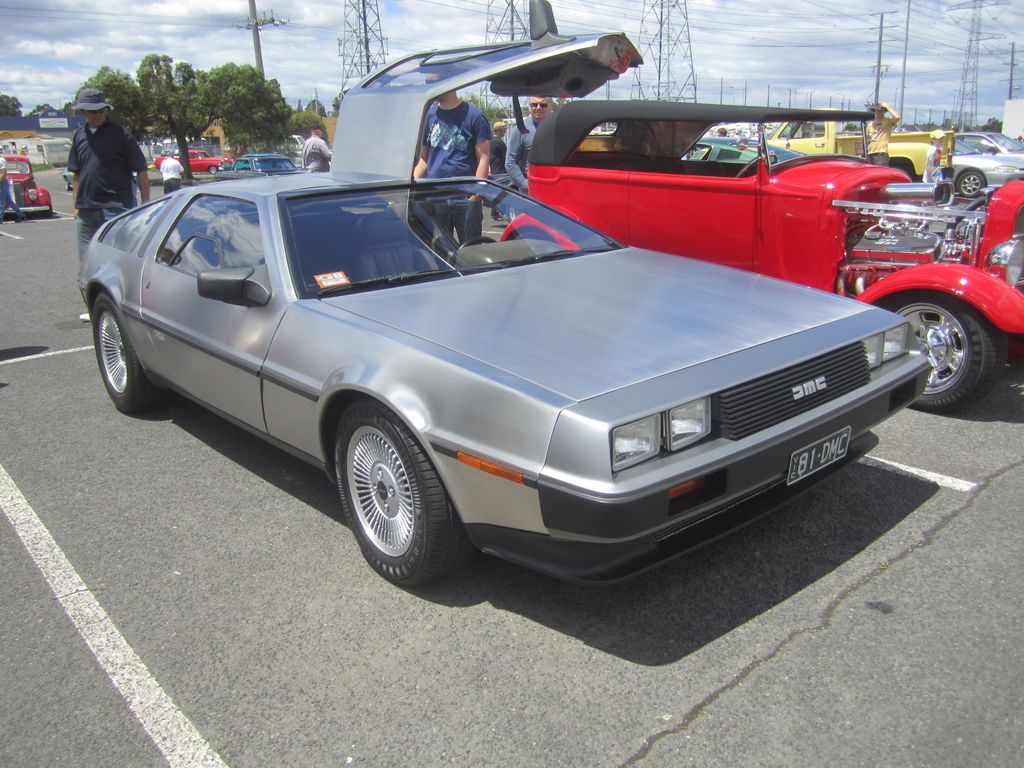
15. **DeLorean DMC-12**Few cars boast an aesthetic as instantly recognizable and culturally significant as the DeLorean DMC-12. Its striking stainless steel body, angular lines, and iconic gullwing doors presented a futuristic vision in 1981, promising a revolution in automotive design and engineering, cementing its place as a cinematic legend.
However, its public release quickly exposed a huge commercial flop, revealing a vast gap between its visionary appearance and actual performance. The vehicle was plagued by horrendous build quality and abysmal reliability, while its rear-mounted, 2.85-litre V6, producing a mere 150bhp (130bhp for US-spec), rendered it woefully slow, especially for a car that looked so modern.
With an agonizing 0-60mph acceleration time of around 10 seconds, the DMC-12 was hardly a cutting-edge sports car. While it holds undeniable allure as a pop culture icon and an extraordinary design statement, its dynamic performance and practical usability are severely compromised, making it a car primarily for admiration as a static showpiece.
**Conclusion:**
This deep dive into automotive disappointments serves as a crucial reminder for any car buyer: looks can be incredibly deceiving. While the allure of gleaming chrome, sleek profiles, and retro charm is powerful, it’s paramount to look beyond the showroom shine. Critically assessing a vehicle’s actual driving dynamics is essential, as the cars we’ve explored consistently prove an aesthetically pleasing exterior does not guarantee an engaging or competent experience behind the wheel.
Car Model Information: 1982 Delorean DMC-12
Name: DMC DeLorean
Alt: 1983 DeLorean
Caption: 1983 DeLorean
Manufacturer: DeLorean Motor Company
Production: January 21, 1981 – December 1982
ModelYears: 1981–1983
Assembly: Dunmurry
Designer: Giorgetto Giugiaro
Class: Sports car
BodyStyle: coupé
Layout: Rear-engine, rear-wheel-drive layout
Doors: Gull-wing doors
Engine: 2.85 L
Abbr: on
Powerout: 130 hp
Transmission: 5-speed manual ,3-speed automatic
Wheelbase: 2413 mm
Length: 4267 mm
Width: 1988 mm
Height: 1140 mm
Weight: 1233 kg
Sp: us
Categories: 1980s cars, All Wikipedia articles written in American English, Articles with short description, Automobiles with backbone chassis, Automobiles with gull-wing doors
Summary: The DMC DeLorean is a rear-engine, two-seat sports car manufactured and marketed by John DeLorean’s DeLorean Motor Company (DMC) for the American market from 1981 until 1983—ultimately the only car brought to market by the fledgling company. The DeLorean is sometimes referred to by its internal DMC pre-production designation, DMC-12, although this was not used in sales or marketing materials for the production model.
Designed by Giorgetto Giugiaro, the DeLorean is noted for its gull-wing doors and brushed stainless-steel outer body panels, as well as its lack of power and performance. Though its production was short-lived, the DeLorean became widely known after it was featured as the time machine in the Back to the Future films.
With the first production car completed on January 21, 1981, the design incorporated numerous minor revisions to the hood, wheels and interior before production ended in late December 1982, shortly after DMC filed for bankruptcy and after total production reached an estimated 9,000 units.
Despite the car having a reputation for poor build quality and an unsatisfactory driving experience, the DeLorean continues to have a strong following, driven in part by the popularity of Back to the Future. 6,500 DeLoreans were estimated to still be on the road as of 2015.
Get more information about: DMC DeLorean
Buying a high-performing used car >>>
Brand: DeLorean Model: DMC-12
Price: $129,950 Mileage: 3,145 mi.
Read more about: Ignite Your Passion: 15 Iconic Cars That Still Dominate Men’s Automotive Dreams and Inspire Unforgettable Drives
For consumers, this translates into actionable advice. Prioritize comprehensive test drives that go beyond a quick spin, seeking varied road conditions and paying close attention to steering feedback, brake responsiveness, and suspension composure. Research owner forums and expert reviews for genuine insights into a car’s long-term driving characteristics, rather than solely its visual appeal or historical mythos. Understanding these disparities can prevent significant buyer’s remorse, ensuring your investment delivers satisfaction both visually and dynamically. Don’t fall for the hype; make informed decisions that ensure your next car looks great *and* drives even better.

